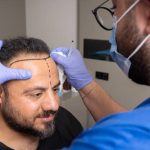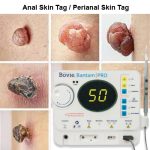
Trichoscopy is a method of hair and scalp evaluation and is used to help the Trichologist assess hair and scalp conditions. Trichoscopic observations can be broadly grouped as hair signs, vascular patterns, pigment patterns and interfollicular patterns. The use of Trichoscopy in the clinical evaluation of hair disorders improves diagnostic capability beyond simple clinical inspection. This method allows viewing of the hair and scalp at high magnifications.

Some Observations using Trichoscopy:
Androgenetic Hair Loss (AGA):
Androgenetic hair loss, also known as male pattern hair loss (MPHL), female pattern hair loss (FPHL), patterned hair loss (PHL), is characterized by progressive hair thinning of the scalp localized to mainly the frontal and crown regions. Main trichoscopic findings in AGA are hair diameter diversity. Miniaturization of hairs in the affected areas causes their diameters to shrink. In early sign of AGA for both men and women, thin, intermediate and thick hairs are found altogether in the affected areas leading to more than 20% hair diameter diversity. Other trichoscopic findings found to be associated with advanced AGA include scalp honeycomb pigmentation, pinpoint white dots and yellow dots.
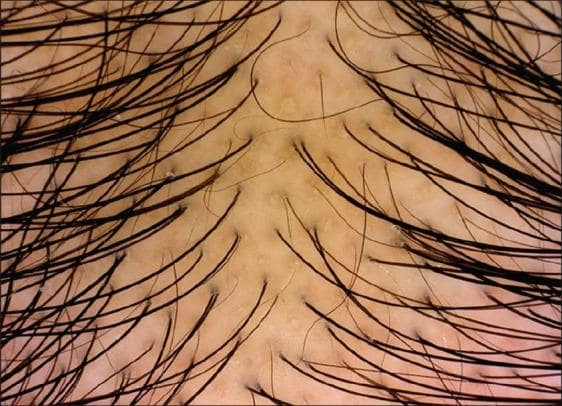
Alopecia Areata:
Yellow dots, exclamation mark hair, and short vellus hair are specific to alopecia areata. In alopecia areata, the most common trichoscopic feature was yellow dots, followed by black dots, micro-exclamation mark, hair shafts with variable thickness, and short vellus hairs. Some of the trichoscopic features can be used to predict the activity and severity of alopecia areata such as the presence of black dots or micro exclamation marks. The tapering hair or micro exclamation hair was considered as a marker of disease activity and known to reflect exacerbation of disease. These findings can be helpful in follow-up the activity of the disease and the response to treatment.
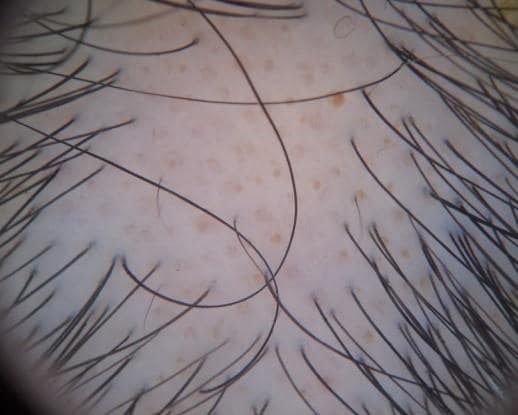
Tinea Capitis:
Tinea capitis is the most common disorder to cause patchy hair loss in children. The most trichoscopic feature was comma hair, corkscrew hairs, and zigzag hairs, short broken hairs and spiral hairs. There were no micro exclamation marks or yellow dots.
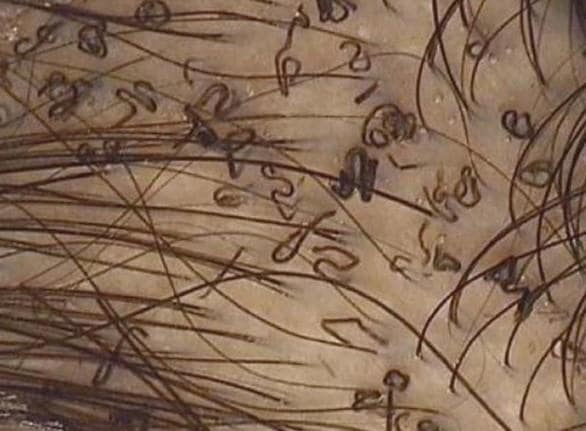
Trichotillomania:
Trichotillomania is an important differential diagnosis for alopecia areata, but the absence of yellow dots in trichotillomania can be a differential point. This study also showed that black dots was not a specific sign for all cases, as it has been detected in cases of trichotillomania and tinea capitis and alopecia areata, while yellow dots had been seen only in alopecia areata.

Alopecia Areata:
FFA is a scarring alopecia causing permanent hair loss mainly in middle aged women. FFA is characterized by the recession of the frontotemporal hairline with alopecic scarring. In trichoscopic analysis, perifollicular erythema (redness around hair follicles) is seen in 95% of cases when the disease is active. Scales is also a characteristic together with the loss of follicular openings.
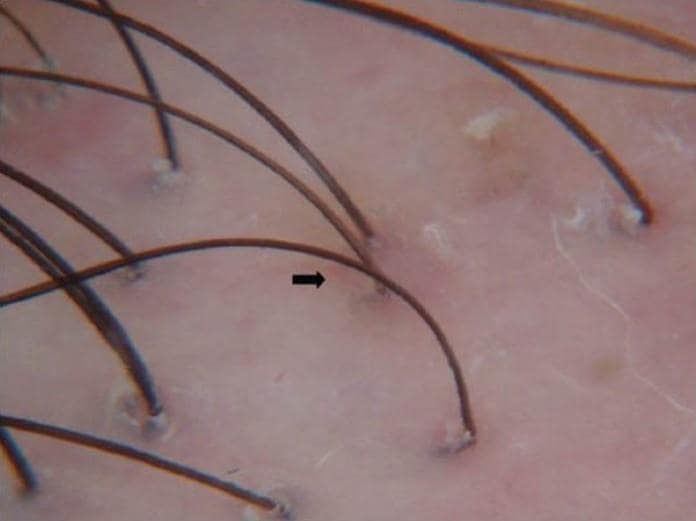
Traction Alopecia:
Traction alopecia (TA) affects one-third of women of African descent who wear various forms of traumatic hairstyling for a prolonged period. Early signs of TA is perifollicular pustules and papules (redness and inflammation around hair follicles). In later stages, the disease evolves into a scarring alopecia with the absence of follicular openings. If there are any hairs remaining in the patches, they are exclusively of vellus origin. Patches of acute TA can present with broken hairs at different length in similarity to trichotillomania

Trichoscopy is useful for the diagnosis and follow-up of hair and scalp disorders. This will enable the trichologist to make assessment such as androgenetic hair loss, tinea capitis, alopecia areata, trichotillomania, scarring alopecias, and traction alopecia. It helps not only for the assessment but also it eases the follow-up of the progression and the activity of all the mentioned causes of hair loss.
Our specialize trichology software allows the trichologist to gather hair density and diameters, access hairs distribution in follicular units, count perifollicular signs (cadaverized, pointed, broken and exclamation mark hairs, yellow, red and white dots), measure hair lengths, mark up specific measurement points on the scalp diagrams, etc. All measurements and calculations are being represented on charts in the form of graphs and data, and a final report and recommended treatments are advised.
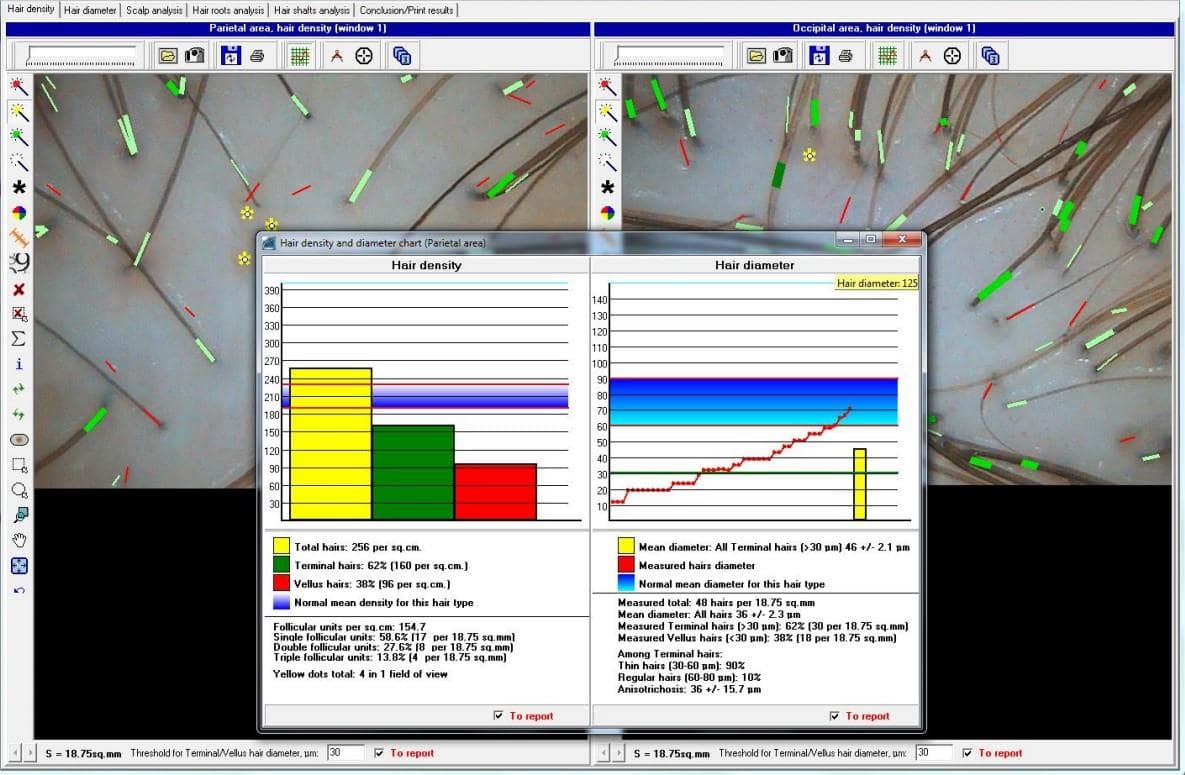
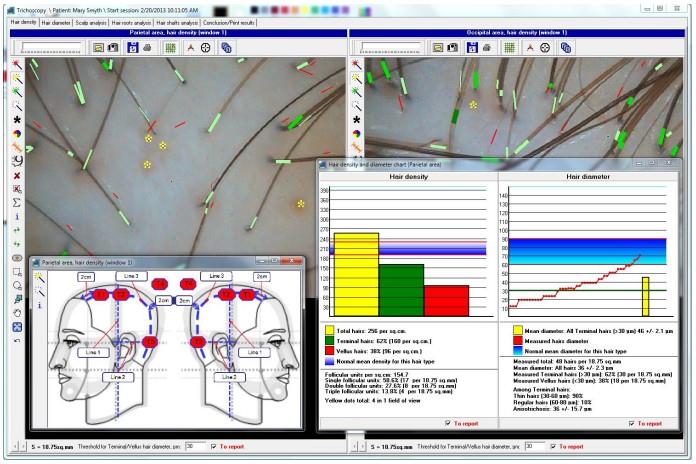

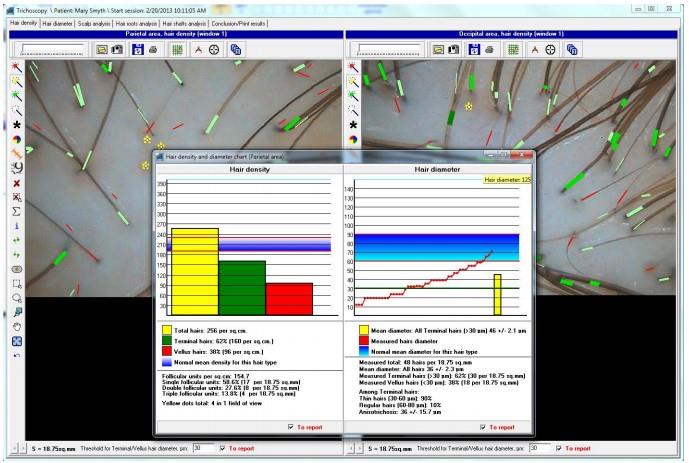
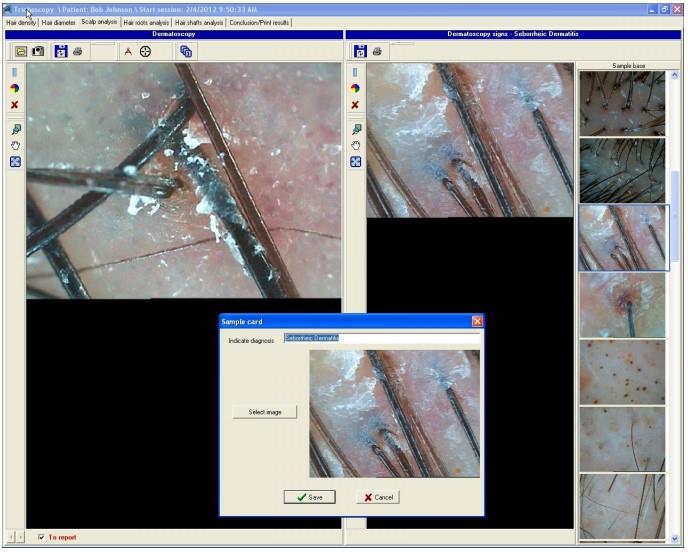
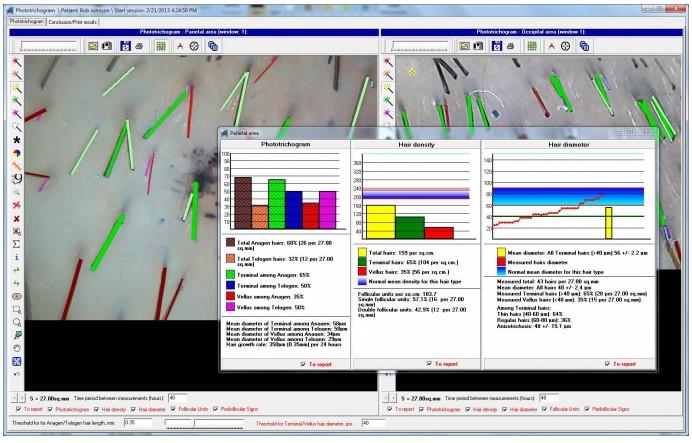
PRICE: $149
INCLUDED IN OUR 1-HOUR IN-CLINIC CONSULTATION
TO BOOK AN IN-CLINIC TRICHOSCOPIC ASSESSMENT OF YOUR HAIR AND SCALP, CLICK HERE
Comments are closed.










